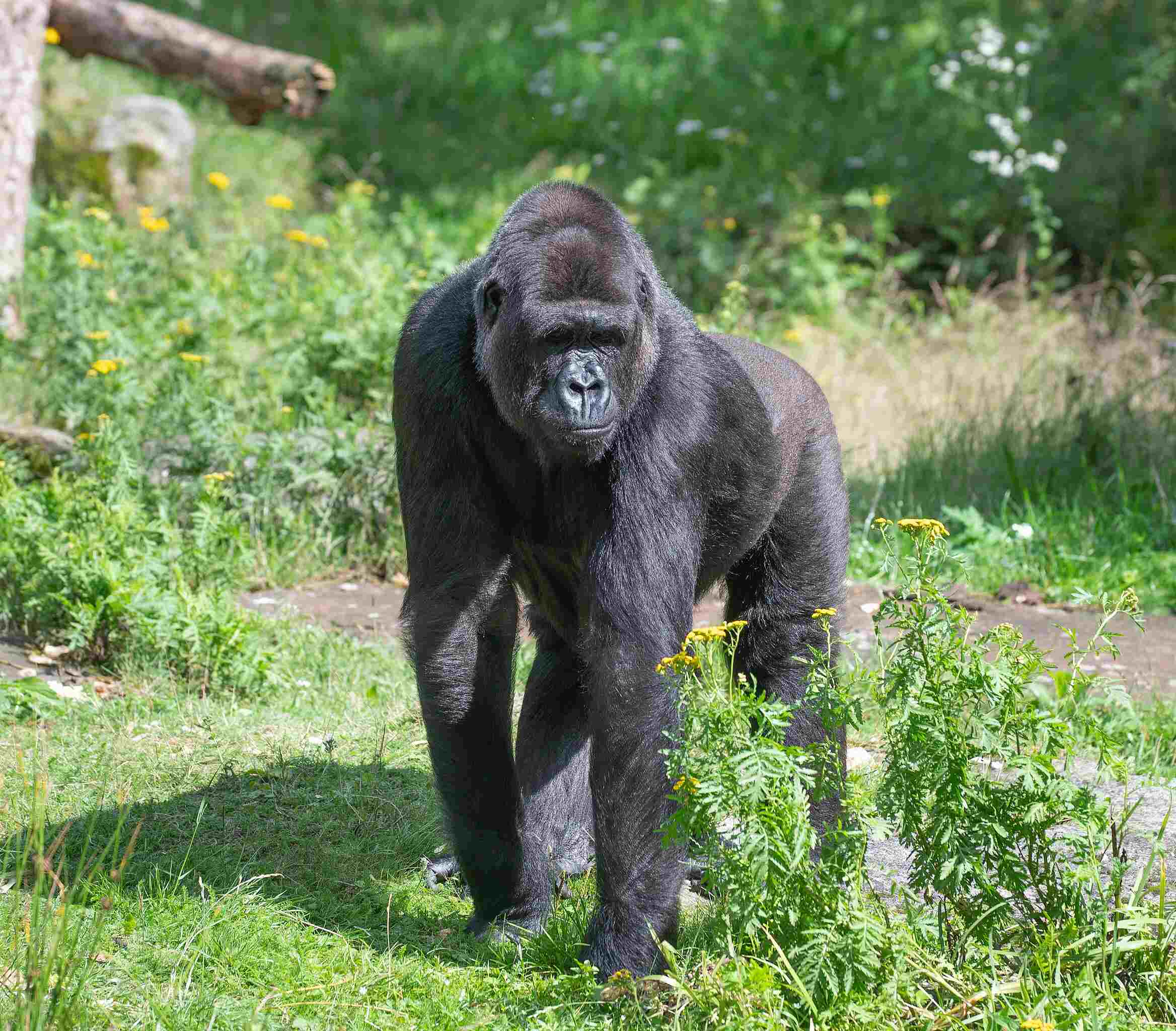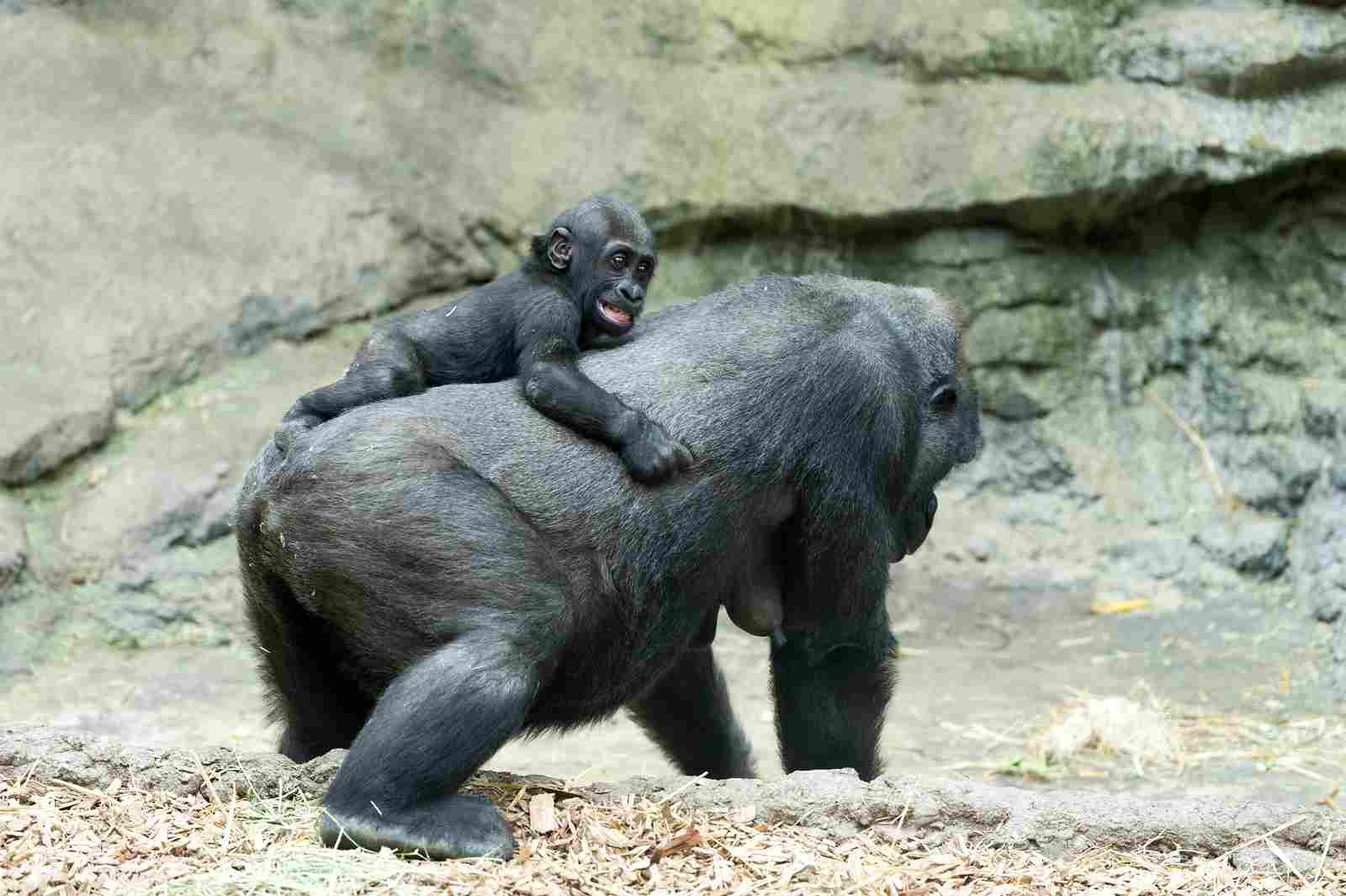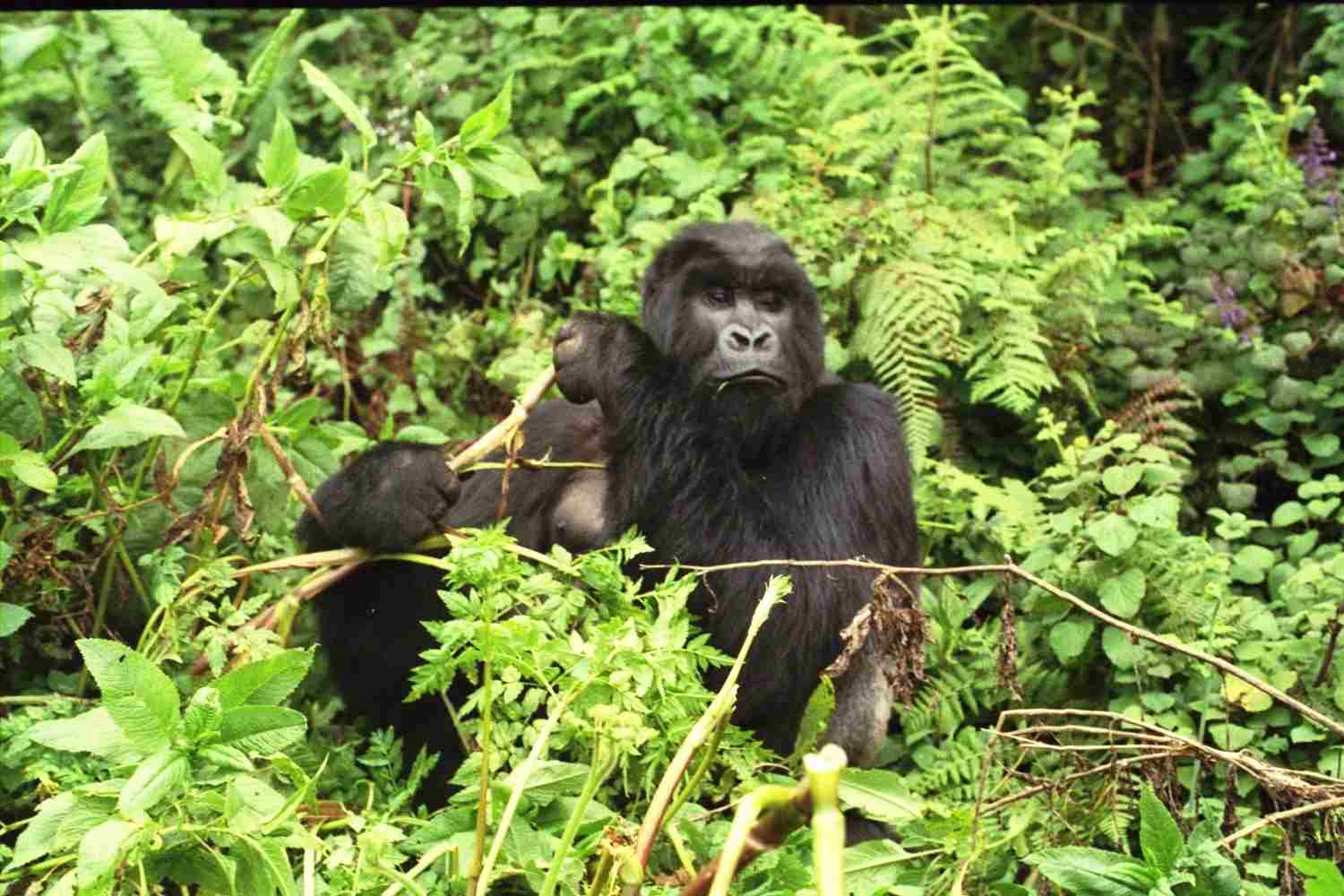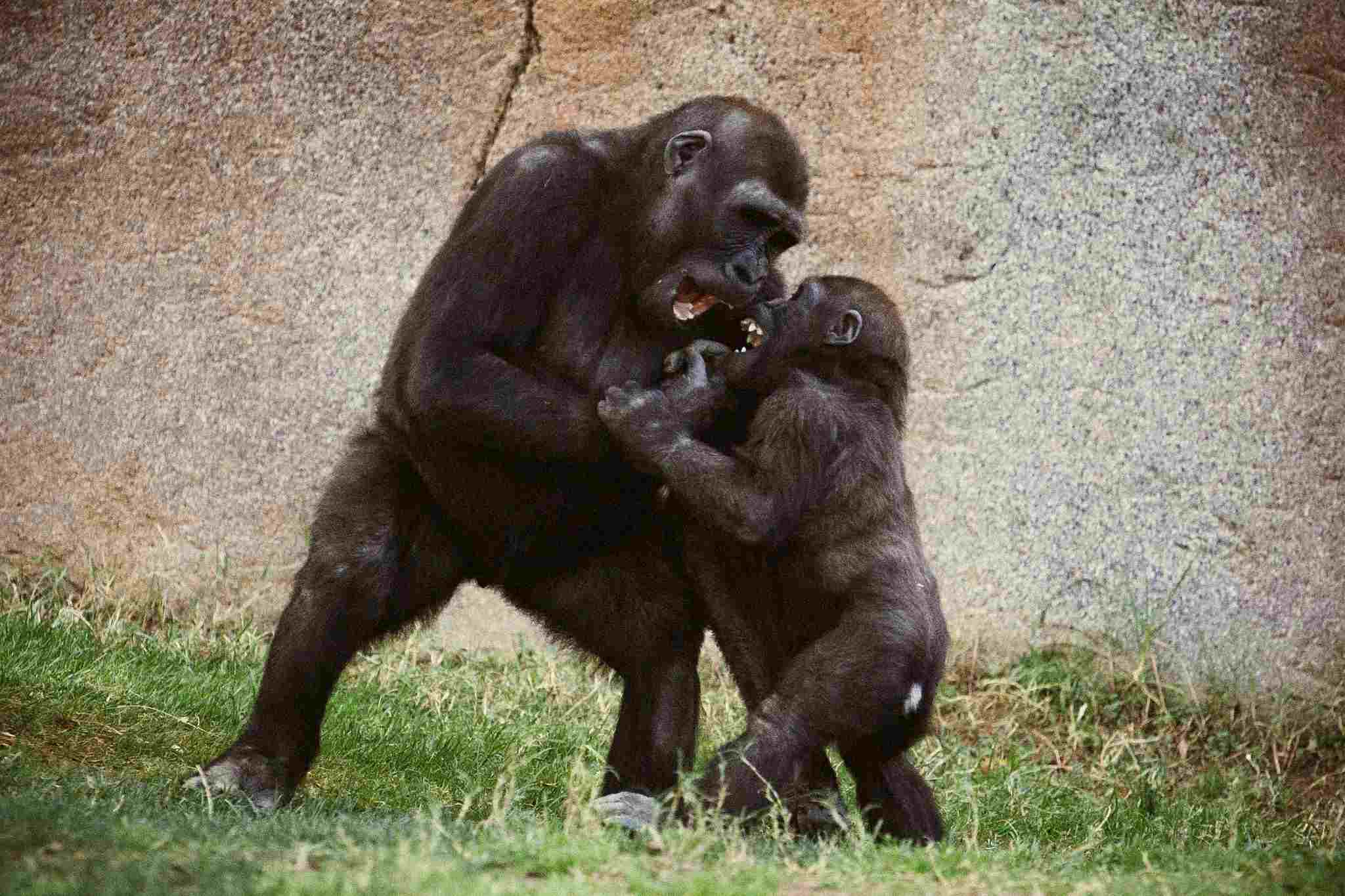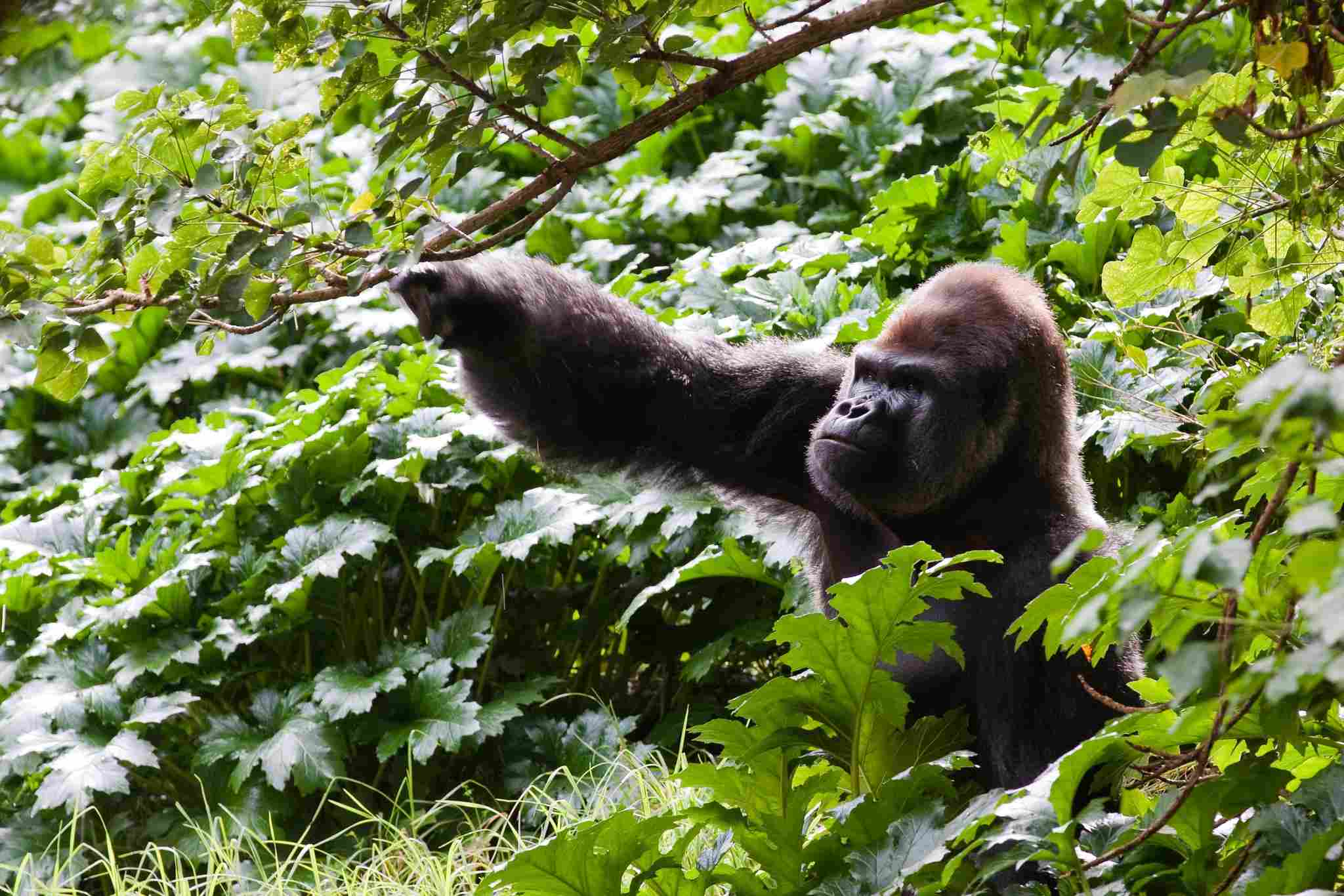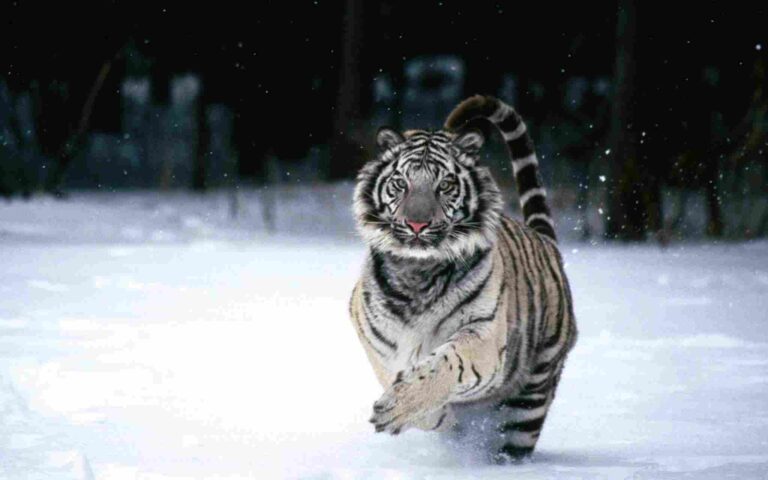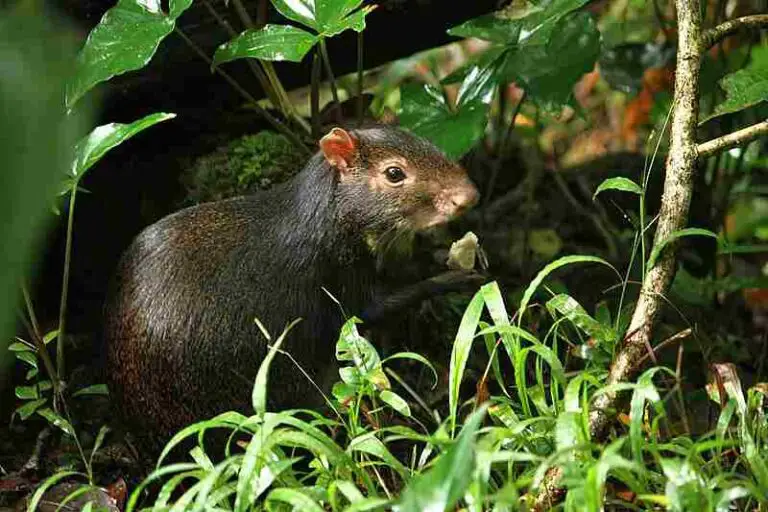Gorilla Vs Ape (Other Species) Size, Weight, Overall Comparison
Gorillas and other ape species, each with unique characteristics within the broader primate family, present an intriguing study of biological and physical traits. Gorillas, symbolizing strength, thrive in dense forests, while other ape species, with their distinctive features, inhabit various environments. This analysis explores taxonomy, appearance, size, weight, strength, and aggressiveness to evaluate the potential outcome of a one-on-one confrontation between a gorilla and another ape species.
Gorilla vs Other Ape Species: Who Will Win in a Fight/Physical Confrontation?
In a one-on-one confrontation, a lone gorilla is likely to overpower an ape of a different species due to its larger size, greater weight, superior strength, and heightened aggressiveness.
I). Size and Weight Advantage:
– Gorillas, being larger and heavier than most other ape species, establish a substantial advantage in one-on-one confrontations, utilizing their size for dominance.
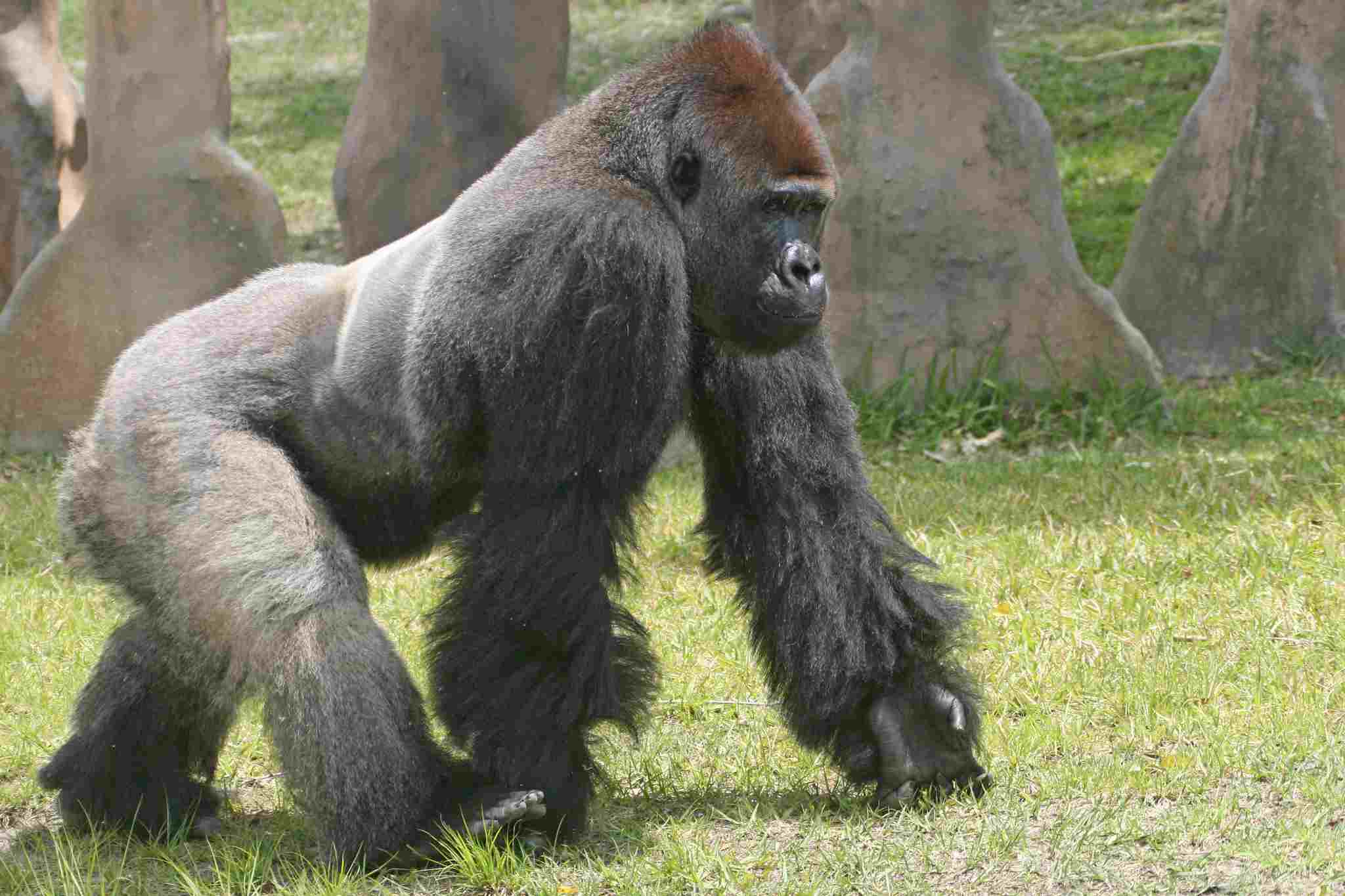
II). Strength Advantage:
– The sheer strength of gorillas surpasses that of many other ape species, providing them with the physical prowess needed to dominate in confrontational scenarios.
III). Aggressiveness Advantage:
– Marked by a more aggressive nature, gorillas outmatch many other ape species in confrontational scenarios, showcasing a formidable demeanor that contributes to their success.
While other ape species may possess unique traits, the overall advantage of the gorilla lies in its combination of size, weight, strength, and aggressiveness.
*Details of Comparison
| Aspect | Gorilla |
Ape (Other Species)
|
| Taxonomy | Family: Hominidae |
Family: Hominidae
|
| Genus: Gorilla |
Genus and Species Vary: Pan troglodytes, Pan paniscus, Pongo
|
|
| Appearance | Robust build, dark fur |
Varies: Chimpanzees – Slender; Bonobos – Slight; Orangutans – Shaggy
|
| Size | Larger, especially males |
Varies: Chimpanzees and Bonobos – Smaller; Orangutans – Comparable
|
| Weight | Heavier, especially males |
Varies: Chimpanzees and Bonobos – Lighter; Orangutans – Comparable
|
| Bite Force | Powerful |
Varies: Strong in all, adapted to dietary needs
|
| Offensive Advantages | Physical strength, displays |
Varies: Aggression in chimpanzees; Peaceful behavior in bonobos
|
| Defensive Advantages | Defensive displays, physical confrontations |
Varies: Defensive behaviors in all, influenced by social structures
|
| Speed | Relatively slow, knuckle-walking |
Varies: Faster in chimpanzees and bonobos; Arboreal agility in orangutans
|
| Agility | Less agile, especially in trees |
Varies: High agility in chimpanzees and bonobos; Arboreal agility in orangutans
|
| Overall Physical Capacity | Remarkable strength |
Varies: Agility, coordination, adapted to ecological needs
|
| Habitat Preference(s) | Dense forests, lowland and mountainous |
Varies: Forests to savannas, tropical rainforests
|
| Tracks | Knuckle-walking leaves distinct tracks |
Varies: Hand and foot pattern in chimpanzees; Palm and knuckle walking in orangutans
|
| Lifespan | 35-50 years |
Varies: 40-50 years, influenced by species
|
| Feeding Mode | Primarily herbivores |
Varies: Omnivores in chimpanzees; Frugivores in bonobos and orangutans
|
| Social Behavior | Stable groups, led by silverback males |
Varies: Complex social structures in chimpanzees; Peaceful in bonobos; Solitary in orangutans
|
| Reproduction | Polygynous mating system |
Varies: Polygynous in chimpanzees; Promiscuous in bonobos; Solitary in orangutans
|
| Parental Behavior | Strong maternal care |
Varies: Maternal care with communal involvement in chimpanzees; Communal care in bonobos; Sole care in orangutans
|
| Proximity to Human Areas | Remote forests, human encroachment threat |
Varies: Threats from habitat loss, poaching, and diseases due to proximity to human settlements
|
| Behavior Toward Humans | Shy, avoid confrontation |
Varies: Aggressive in chimpanzees; Tolerant in bonobos; Shy in orangutans
|
| Danger to Humans | Rarely dangerous to humans |
Varies: Aggressive potential in chimpanzees; Less aggressive in bonobos; Shy but defensive in orangutans
|
| Associated Precautions | Maintain a safe distance in wildlife tourism |
Varies: Caution in tourist interactions with chimpanzees; More tolerance in bonobos; Careful management with orangutans
|
| Conservation Status | Varied, some critically endangered |
Endangered status for chimpanzees and bonobos; Critical threats to orangutans
|
| Conclusion | Shared ancestry, diverse adaptations |
Conservation requires tailored strategies addressing specific challenges
|
Key Points:
- Taxonomy: Both belong to Hominidae; gorillas specifically in Gorilla genus, other apes in various genera.
- Appearance and Physiology: Diverse physical characteristics reflect habitat adaptations.
- Social Structures: Gorillas in stable groups; other apes show varying levels of complexity.
- Habitat and Feeding: Different preferences, reflecting ecological adaptations.
- Human Interaction: Proximity, behavior, and danger to humans vary among species.
- Conservation Status: Diverse, with common threats necessitating unified conservation efforts.
1. Taxonomy: Gorilla vs. Ape (Other Species)
Gorilla:
Family: Hominidae
Genus: Gorilla
Species: Gorilla beringei (Mountain Gorilla, Eastern Gorilla) and Gorilla gorilla (Western Gorilla)
Ape (Other Species, e.g., Chimpanzee, Bonobo, Orangutan):
Family: Hominidae
Genera and Species:
Pan troglodytes (Chimpanzee)
Pan paniscus (Bonobo)
Pongo (Orangutan)
Comparison:
Both gorillas and other apes belong to the same family (Hominidae), emphasizing their close evolutionary relationship.
Gorillas are specifically classified under the Gorilla genus, while other apes encompass different genera such as Pan and Pongo.
Ecological Implications:
Understanding the taxonomy provides insights into the evolutionary connections and shared ancestry among these primates.
Conservation efforts should consider the unique characteristics and needs of each species within the broader ape family for effective protection and preservation.
2. Appearance: Gorilla vs. Ape (Other Species)
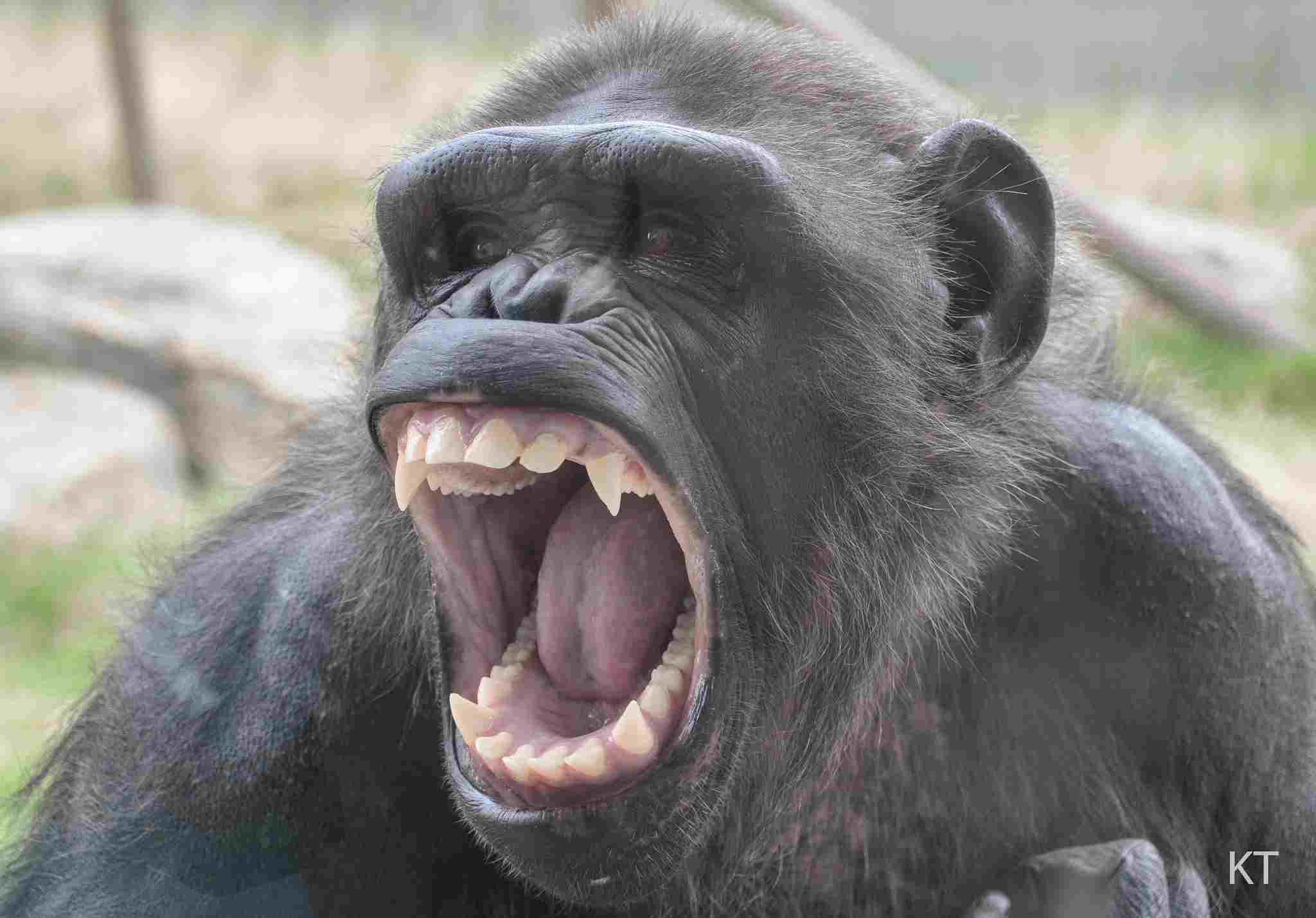
Gorilla:
Robust build with broad shoulders and a distinctive sagittal crest on the skull (more prominent in males).
Coarse, dark fur; often referred to as black or silverback gorillas depending on age and gender.
Ape (Other Species):
Chimpanzees: More slender bodies, longer limbs, and no sagittal crest.
Bonobos: Slighter in build with longer limbs, often characterized by a more upright posture.
Orangutans: Shaggy reddish-brown hair, distinctive cheek pads in males.
Comparison:
While gorillas exhibit a robust physique with specific features, other apes display variations in body size, limb proportions, and fur color, reflecting their diverse ecological adaptations.
Ecological Implications:
The varying appearances among apes highlight adaptations to different ecological niches and behavioral strategies.
Conservation efforts must consider these physical characteristics to tailor protection measures according to each species’ habitat and lifestyle.
3. Size: Gorilla vs. Ape (Other Species)
Gorilla:
Adult males: 5.6 to 5.9 feet (1.7 to 1.8 meters) tall.
Adult females: Generally smaller than males.
Ape (Other Species):
Chimpanzees: Males around 3.9 to 4.6 feet (1.2 to 1.4 meters), females smaller.
Bonobos: Similar in size to chimpanzees.
Orangutans: Adult males can reach around 4.6 to 5.6 feet (1.4 to 1.7 meters), females smaller.
Comparison:
Gorillas are generally larger than other ape species, especially adult males, reflecting differences in their ecological roles and social structures.
Ecological Implications:
Size differences can influence feeding habits, ranging patterns, and interactions with other species within their ecosystems.
Conservation strategies need to address the specific spatial and dietary needs associated with the size variations among these primates.
4. Weight: Gorilla vs. Ape (Other Species)
Gorilla:
Adult males: 300 to 400 pounds (136 to 181 kilograms) or more.
Adult females: Generally smaller but still robust.
Ape (Other Species):
Chimpanzees: Males around 88 to 130 pounds (40 to 59 kilograms), females lighter.
Bonobos: Similar in weight to chimpanzees.
Orangutans: Adult males can weigh between 132 to 220 pounds (60 to 100 kilograms).
Comparison:
Gorillas, particularly males, have a notably higher average weight compared to other ape species.
Ecological Implications:
Weight influences energy requirements, feeding habits, and overall ecological impact; understanding these differences is crucial for habitat management and conservation planning.
5. Bite Force: Gorilla vs. Ape (Other Species)
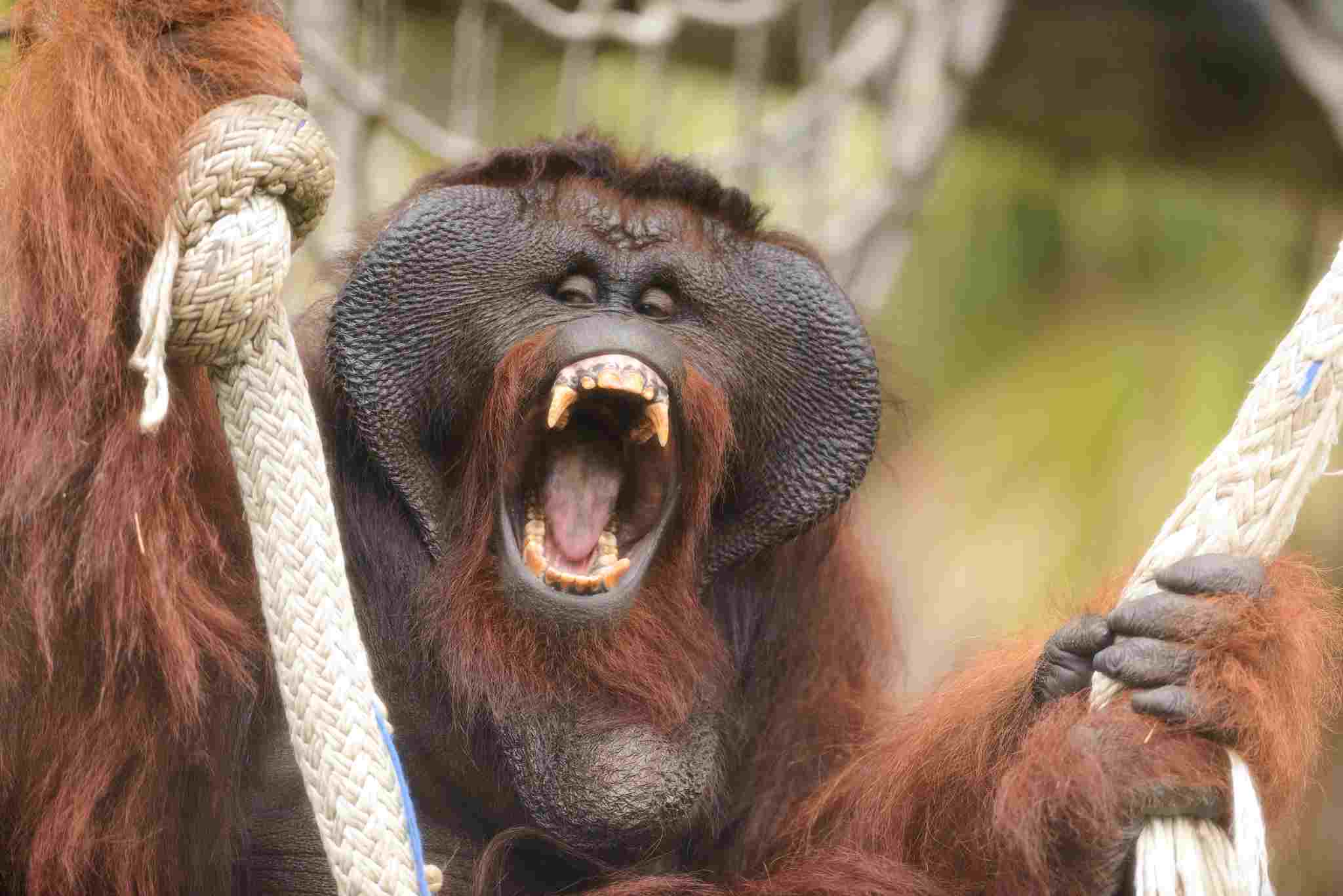
Gorilla:
Powerful bite force attributed to robust jaws and large canine teeth.
Ape (Other Species):
Chimpanzees and Bonobos: Strong bite force relative to body size.
Orangutans: Strong bite, facilitated by large canines.
Comparison:
While there are variations, all apes, including gorillas, possess strong bite forces adapted to their respective dietary habits and ecological roles.
Ecological Implications:
Bite force relates to feeding strategies and ecological niche; understanding these variations aids in predicting impacts on vegetation, seed dispersal, and potential interactions with other species.
6. Physical Offensive Advantages: Gorilla vs. Ape (Other Species)
Gorilla:
Dominant males exhibit physical strength and intimidating displays, utilizing their robust build and powerful limbs.
Ape (Other Species):
Chimpanzees: Known for aggression, using both physical displays and coordinated group attacks.
Bonobos: Tend to resolve conflicts through social bonding and affiliative behaviors.
Orangutans: Males may display dominance through physical prowess and long calls.
Comparison:
While gorillas rely on physical strength and displays, other apes employ a range of strategies, reflecting diverse social structures and ecological niches.
Ecological Implications:
Understanding offensive behaviors is crucial for predicting potential conflicts and managing interactions with other species in shared habitats.
7. Physical Defensive Advantages: Gorilla vs. Ape (Other Species)
Gorilla:
Dominant males may engage in physical confrontations to defend their group or territory.
Ape (Other Species):
Chimpanzees: Exhibit defensive behaviors through vocalizations, displays, and coordinated group efforts.
Bonobos: Primarily resolve conflicts through social bonding and avoidance.
Orangutans: Males may defend territory through vocalizations and physical displays.
Comparison:
Defensive strategies vary among species, reflecting adaptations to different ecological challenges and social dynamics.
Ecological Implications:
Studying defensive behaviors helps in understanding the role of these primates in maintaining ecological balance and avoiding conflict with other species.
8. Speed: Gorilla vs. Ape (Other Species)
Gorilla:
Relatively slow and prefer walking on all fours (knuckle-walking).
Ape (Other Species):
Chimpanzees and Bonobos: Agile climbers and faster runners than gorillas.
Orangutans: Primarily arboreal, proficient climbers, but not as fast on the ground.
Comparison:
Differences in speed reflect adaptations to their respective habitats and lifestyles.
Ecological Implications:
Speed influences foraging strategies, predator avoidance, and interactions with other species; understanding these variations aids in habitat management.
9. Agility: Gorilla vs. Ape (Other Species)
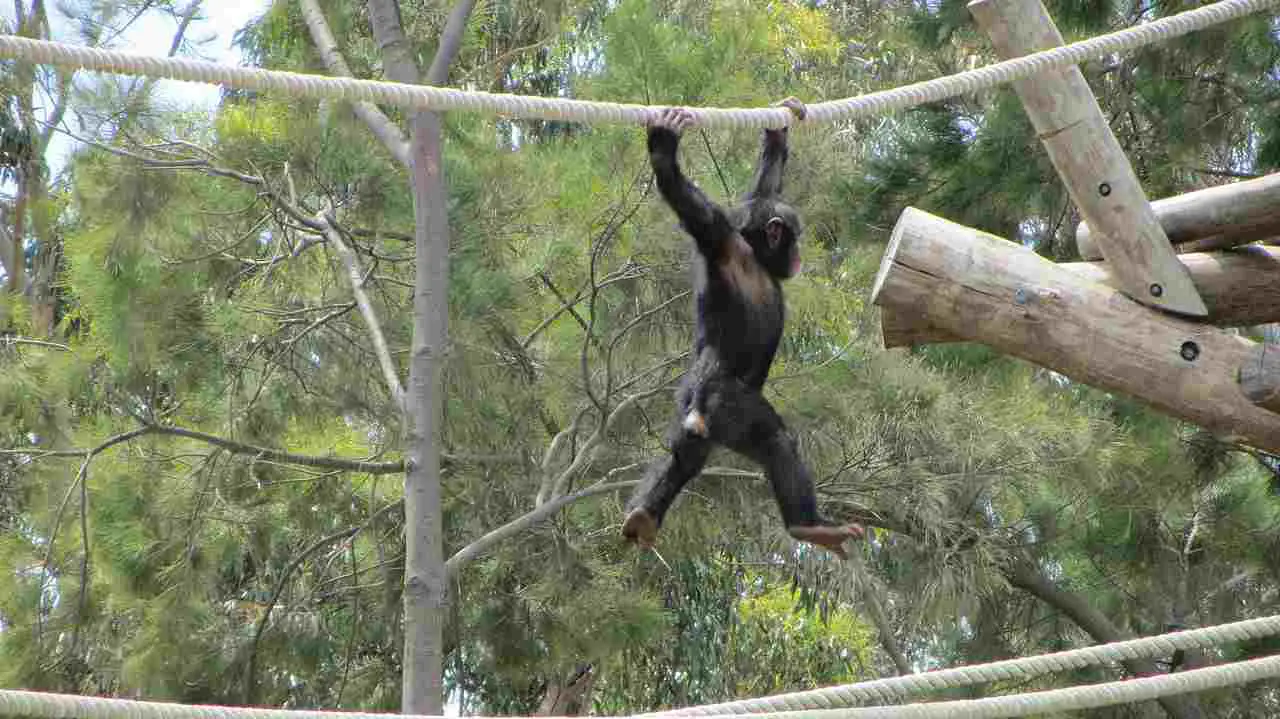
Gorilla:
Less agile compared to some other apes, especially in trees.
Ape (Other Species):
Chimpanzees and Bonobos: Highly agile climbers and exhibit impressive arboreal agility.
Orangutans: Well-adapted for arboreal life, displaying agility in tree canopy movement.
Comparison:
Differences in agility reflect adaptations to their ecological niches, with some species excelling in arboreal environments.
Ecological Implications:
Understanding agility is vital for predicting movement patterns, resource utilization, and potential interactions with other arboreal species.
10. Overall Physical Capacity: Gorilla vs. Ape (Other Species)
Gorilla:
Exhibits remarkable strength and physical power, especially in dominant males.
Ape (Other Species):
Varies among species; chimpanzees and bonobos may display agility and coordination, while orangutans excel in arboreal activities.
Comparison:
Each species possesses unique physical capacities, contributing to their survival and adaptation in distinct ecological niches.
Ecological Implications:
Understanding the overall physical capacity aids in predicting the impact of these primates on their environment, including resource utilization and interactions with other species.
11. Habitat Preference(s): Gorilla vs. Ape (Other Species)
Gorilla:
Primarily inhabit dense forests, both lowland and mountainous regions.
Ape (Other Species):
Chimpanzees: Range from forests to savannas, adaptable to various environments.
Bonobos: Prefer dense, humid forests.
Orangutans: Mainly inhabit tropical rainforests.
Comparison:
Habitat preferences reflect adaptations to specific environmental conditions and resource availability.
Ecological Implications:
Conservation efforts must consider these habitat preferences to ensure the preservation of suitable environments for each species.
12. Tracks: Gorilla vs. Ape (Other Species)
Gorilla:
Knuckle-walking leaves distinct tracks, showing the impression of knuckles and fingertips.
Ape (Other Species):
Chimpanzees and bonobos: Walk on all fours with a distinct hand and foot pattern.
Orangutans: Leave tracks reflecting their palm and knuckle walking, adapted for both ground and tree movement.
Comparison:
Track patterns provide insights into their locomotion styles and adaptations to different terrains.
Ecological Implications:
Understanding tracks aids researchers in tracking and monitoring populations, contributing to conservation efforts.
13. Lifespan: Gorilla vs. Ape (Other Species)
Gorilla:
Typically 35 to 50 years in the wild, with variations based on species and gender.
Ape (Other Species):
Chimpanzees and bonobos: Around 40 to 50 years in the wild.
Orangutans: Can live up to 50 years or more.
Comparison:
Lifespan variations among species reflect different life history strategies and adaptations.
Ecological Implications:
Understanding lifespan contributes to population dynamics, reproductive strategies, and overall ecological roles within their respective habitats.
14. Mode of Feeding: Gorilla vs. Ape (Other Species)
Gorilla:
Primarily herbivores, with a diet consisting of leaves, stems, fruits, and occasional insects.
Ape (Other Species):
Chimpanzees: Omnivores, consuming fruits, leaves, insects, and, occasionally, meat.
Bonobos: Primarily frugivores, with a diet rich in fruits.
Orangutans: Mainly frugivores, supplemented with leaves, bark, and insects.
Comparison:
Differences in feeding habits reflect adaptations to available food sources in their respective habitats.
Ecological Implications:
Understanding the mode of feeding aids in predicting the impact on vegetation and potential interactions with other species in shared ecosystems.
15. Social Behavior: Gorilla vs. Ape (Other Species)
Gorilla:
Live in stable groups called troops, led by a dominant silverback male.
Ape (Other Species):
Chimpanzees: Complex social structures with alpha males and cooperative hunting.
Bonobos: Known for peaceful and matriarchal social structures.
Orangutans: Generally solitary, with occasional social interactions, especially between mothers and offspring.
Comparison:
Social behaviors vary, reflecting different strategies for survival and resource utilization.
Ecological Implications:
Understanding social dynamics is crucial for conservation, as it impacts habitat requirements, group stability, and potential conflicts with other primate species.
16. Mode of Reproduction: Gorilla vs. Ape (Other Species)
Gorilla:
Polygynous mating system; dominant males have multiple mates.
Ape (Other Species):
Chimpanzees: Polygynous, with complex mating behaviors.
Bonobos: Promiscuous mating, resolving conflicts through sexual interactions.
Orangutans: Solitary, with females attracting males during their estrous cycles.
Comparison:
Reproductive strategies vary, reflecting adaptations to different ecological and social environments.
Ecological Implications:
Understanding reproductive behaviors aids in predicting population dynamics, genetic diversity, and overall contributions to ecosystem health.
17. Parental Behavior: Gorilla vs. Ape (Other Species)
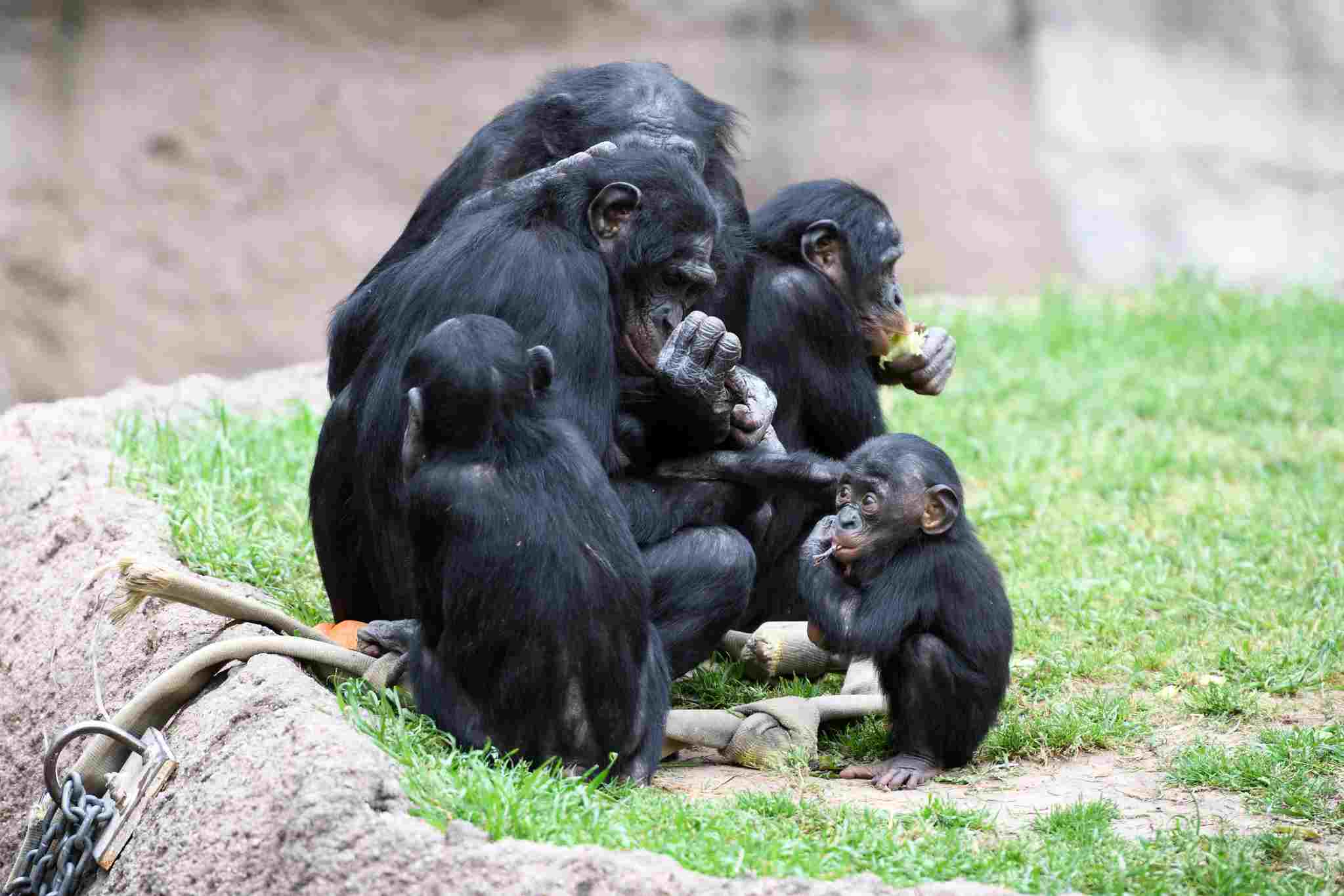
Gorilla:
Strong maternal care; females are highly protective of their offspring.
Ape (Other Species):
Chimpanzees: Mothers provide care, and the community participates in protecting and nurturing young.
Bonobos: Mothers play a significant role, and communal care is prevalent.
Orangutans: Females provide sole care, and the relationship with the offspring is crucial for survival.
Comparison:
Parental behaviors vary, reflecting adaptations to different social structures and ecological challenges.
Ecological Implications:
Understanding parental care is essential for predicting population growth, juvenile survival rates, and the overall impact on the ecosystem.
18. Proximity to Human-Inhabited Areas: Gorilla vs. Ape (Other Species)
Gorilla:
Generally inhabit remote forested areas, but human encroachment poses a threat.
Ape (Other Species):
Chimpanzees: Face threats from habitat loss, poaching, and diseases due to proximity to human settlements.
Bonobos: Threatened by habitat destruction and hunting near human-inhabited areas.
Orangutans: Suffer from extensive habitat loss due to palm oil plantations and logging, bringing them closer to human activities.
Comparison:
Human-wildlife conflict varies among species, influenced by their proximity to human settlements.
Ecological Implications:
Mitigating threats in areas of human-wildlife overlap is crucial for the conservation of these primates and the overall health of their ecosystems.
19. Behavior Toward Humans: Gorilla vs. Ape (Other Species)
Gorilla:
Generally shy and avoid direct confrontation with humans but may display defensive behaviors if threatened.
Ape (Other Species):
Chimpanzees: Can be aggressive and may exhibit curiosity or aggression toward humans.
Bonobos: Generally more tolerant and less aggressive toward humans.
Orangutans: Tend to avoid direct contact with humans but may suffer from stress when closely observed.
Comparison:
Responses to human presence vary, influenced by the species’ natural behaviors and experiences with humans.
Ecological Implications:
Understanding how different species react to humans is crucial for designing conservation strategies that minimize disturbance and stress.
20. Danger Posed to Humans: Gorilla vs. Ape (Other Species)
Gorilla:
Rarely pose a direct danger to humans; more inclined to avoid confrontations.
Ape (Other Species):
Chimpanzees: Can be dangerous and exhibit territorial aggression.
Bonobos: Less aggressive toward humans compared to chimpanzees.
Orangutans: Typically shy but may react defensively if they feel threatened.
Comparison:
The level of danger varies, with some species more prone to aggression in specific situations.
Ecological Implications:
Assessing potential risks to humans helps in establishing guidelines for responsible wildlife management and conservation.
21. Associated Precautions: Gorilla vs. Ape (Other Species)
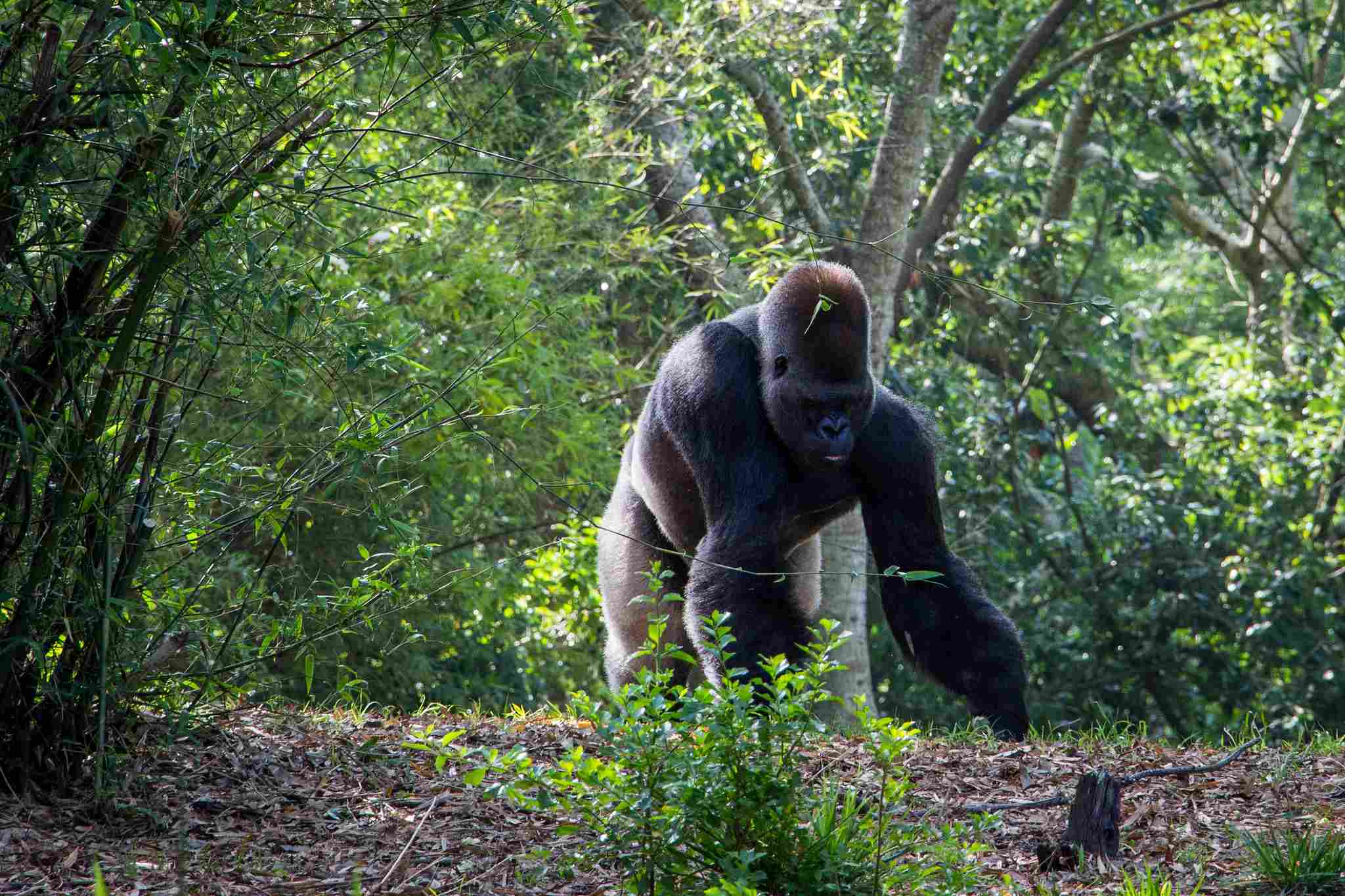
Gorilla:
Wildlife tourism guidelines emphasize maintaining a safe distance to avoid stressing the animals.
Ape (Other Species):
Chimpanzees: Tourist interactions require caution due to potential aggression.
Bonobos: Similar precautions as with chimpanzees, though generally less aggressive.
Orangutans: Tourist encounters require careful management to minimize stress and potential aggression.
Comparison:
Precautions and guidelines vary based on the species’ behavior and potential risks to humans.
Ecological Implications:
Implementing responsible tourism practices is essential for minimizing the impact on the primates and their habitats, ensuring long-term conservation success.
22. Conservation Status and Conclusion: Gorilla vs. Ape (Other Species)
Conservation Status:
Gorilla: Varied, with some populations listed as critically endangered, highlighting the urgent need for conservation efforts.
Ape (Other Species): Chimpanzees and bonobos are endangered due to habitat loss and hunting, while orangutans face critical threats, particularly the Bornean species.
Implications:
While gorillas and other apes share common ancestry within the Hominidae family, their diverse characteristics and behaviors highlight adaptations to distinct ecological niches.
Conservation efforts must consider habitat preservation, mitigation of human-wildlife conflict, responsible tourism practices, and addressing threats such as poaching and habitat loss.
Collaboration between researchers, conservationists, and local communities is crucial for the long-term survival of gorillas and other ape species, contributing to the overall health of their ecosystems.
Conclusion
I) Similarities:
Taxonomy: Both gorillas and other apes belong to the Hominidae family, showcasing a shared evolutionary history.
Ecological Roles: Despite differences, both contribute to their ecosystems through seed dispersal, vegetation control, and other ecological interactions.
Conservation Challenges: Gorillas and other apes face common threats like habitat loss, poaching, and diseases, necessitating unified conservation efforts.
II) Differences:
Appearance and Physiology: Varied physical characteristics, including size, fur color, and body proportions, reflect adaptations to diverse habitats and lifestyles.
Social Structures: Gorillas exhibit stable family groups led by dominant males, while other apes, like chimpanzees and bonobos, have more complex and dynamic social structures.
Feeding Habits: While gorillas are primarily herbivores, other apes, like chimpanzees, have omnivorous diets, showcasing adaptations to different ecological niches.
Habitat Preferences: Gorillas prefer dense forests, while other apes may inhabit various environments, emphasizing their adaptability.
